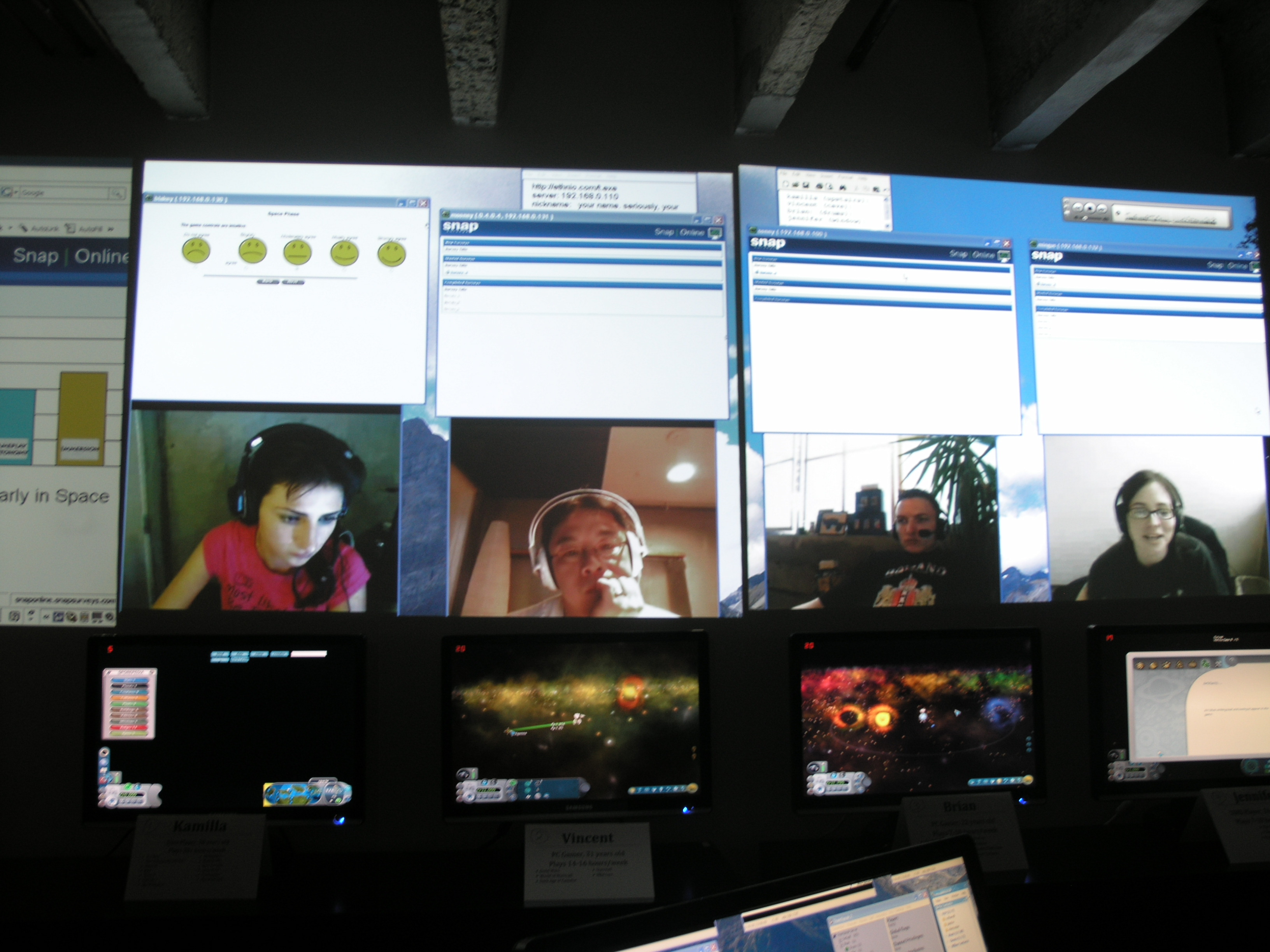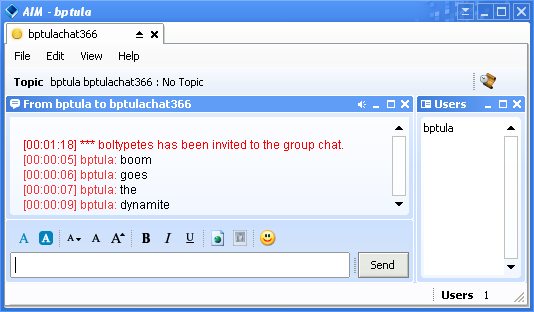Introduction
These are my notes from the Free Culture Conference 2008. This is the panel on Technology & The Future of Copyright. The introduction lady said” People have said to me that we couldn’t have picked a better selection of speakers for this topic.” Okay, sweet.
Brian Carver (Professor, Berkeley iSchool)
The Story of Bob
I’m assistant professor at CAL and a lawyer.
Jacobsen V. Katzen
This is the first time a US supreme court has enforced that an open source license is enforceable. You may cheer.
It turns out the model trains are really complicated. JMRI model interface is in competition with KAM industries that’s a proprietary interface for controlling model trains. Traditionally, it’s been unlikely that patent holders would sue individual developers of FOSS projects. Bob Jacobsen is a regular guy, but he got nasty letters demanding $200,000 or more in damages.
But wait. It turned out that Katzer had incorporated some of his JMRI.
Bob Sued
He sued for copyright infringement
Who Cares?
If bob can bring a copyright infringement suit, he can get injunction, statutory damages, and some other things
Bob Loses in District Court
He files an appeal. An amazing number of people got together to help. CC, Linux Foundation, Open Souce Foundation, Software Freedom Law Center, The PERL Foundation, and Wikimedia foundation.
The Court Got It
They saw all these interested parties, and realized that copyright holders for open source materials have the right to enforce how that license is used.
Take Aways
Free software that competes with commercial software can face real threats. Control of the market can be as desirable as cash money.
Free software licenses are just as enforceable as other software licenses
As much as we’d like to shut up and code, lawyers matter. Yes, since I’m a lawyer you should be suspicious of this. (nate says: holy shit that’s funny)
Molly Van Houweling (Professor, Berkeley Law):
Copyright is Too Easy
The old story is that copyright is too hard. But my new story is that copyright is too easy. These days, copyright arises immediately. You don’t have to pay a fee, or put up a notice, or do anything. So free culture results in free copyright. Because anyone that can do free culture can get an automatic free copyright. What’s bad aboput that? Well all those copyrights can be a hurdle to future generations, because they might have to worry about yours just like they have to worry about big companies.
Proliferation of Ownership
Proliferation of the culture of authorship has also led to this proliferation of ownership. People can move forward and do stuff because they have to ask too many people for permission. That can stop development in it’s tracks. There has long been creative collaboration. Before there was Wikipedia, there were encyclopedias that had lots of authors working together. The authors, or early re-mixers, also worried about copyright.
Check out those Early Authors
So these early authors lobbied for changes in copyright law. One of them was the work-for-hire doctrine. That’s design in part to ease the process of getting copyright by putting everything in the hands of one person. But I argue this is good. That goes against Lessig saying that lucas arts taking your ideas is like digital share cropping.
All this copyright can be good? Really?
But the proliferation of this copyright can be a good thing. For example, if you want to do a star wars remix of any of their source media, you can actually know that you have one person to go to. You don’t have to go find all the individual owners of those ideas.
I’m out of time
The problem is that if there are so many owners, and we want to do something that’s licensed under both the GPL and a Creative Commons license, that can be difficult, because we have to go back to all the individual people to ask if you can change the license.
Solutions
· Really good identity information. Keeping good track of authors, good identity systems like professor lessig mentioned.
· Have things in the public domain. You don’t have to ask permission. We can get things in the PD in 2 ways:
- Creative Commons Zero CC0 is an example.
- The second is to reform copyright law.
Having too many people owning a license makes it impossible to actually get the license. This is the thing I really worried about.
Derek Slater (Google Policy):
My Picture from Google on Where the Policy Winds are Blowing
There is reason to be optimistic. You guys are winning. Copyright is changing in good ways. AT google, we’re doing a lot of balancing fair use with copyright holders on YouTube, and other places. Make sure that people get paid for their work. I think there’s been some
- Selling without DRM
- Video identification. Copyright holders can identify their work and either
- have it removed
- have it monetized. 90% of people that have had this choice
But There has also been some Troubling Signs
Internationally, there has been some heightened restrictions
- Anti-counterfeiting trade agreement being negotiated in secret. Google can’t see it (gasp) let alone the general public. Nobody knows about this
- In Europe, starting with France, ISPs and the government met to get a three strikes and your off the internet. Also, the ISPs are considering filtering techniques at the network levels to protect against copyrighted material. That’s dangerous. DANGEROUS.
- Locally, the push has happened on college campuses to do something.
So what can you do?
Helping to educate school administrators about fair use, why filtering is bad.
Get active with EFF, creative commons, free culture, grass roots efforts, and people in the hall here
Get your voice heard
Jason Schultz (Samuelson Clinic, EFF):
Ask Not what free culture can do for you, ask what you can do for free culture
A lot of people who were getting sued were artists who had put something out on a record label. But it’s not exactly you guys. But we’ve seen a change now to where some of these cases are people like you getting sued..
Diebold Evil
There’s Diebold where you have people who have posted those emails about their voting machines on the internet. Then Diebold is sending out nasty letters to those people to take the emails down under DCMA (digital copyright millennium act).
Nate says: That’s a case where there’s a clear public good being served by those letters being up. Learning that those voting machines.
Interesting Cases
Michael Cric, Ury Gellar, and these ones in detail:
· Rick Silver: claims to have choreographed the electric slide and was taking down videos from YouTube because he didn’t like the choreography.
· Stephanie Lens: 29 second video of her 18 month old baby dancing to Prince “let’s go crazy” and puts it on you tube. Universal Music sent a copyright notice telling her to take it down. EFF sued saying it was unfair and won!
That was a landmark decision. Steffany Lens didn’t start out being an activist on this, but we’re seeing a shift in the way that good law can be fought for. I’m not saying you should put yourself in the cross hairs. But you can take a stand. At EFF, the Stanford Fair Use people take on these cases. Before you put up the video you can talk to us. And if you get a “take down” notice then maybe we can help.
Have lots of babies
You can be an activist by putting out the kind of material that has a good message. You don’t have be on the defensive. If your content has a good message like a video for your parents of your child, judges can understand that. Think of ourselves as people that can get involved in the fight. (nate: hell yeah).
Question: What would you like to see happen with copyright?
Molly
I’d like to switch back to an opt-in system for copyright. It would mean copyright would only be attached when people cared enough to attach it.
Jason
A lot of people have heard about this woman who lost the case for $200,000 and now the judge is allowing her a new trial. But all that money came from this notion of statutory damages. I would change that. Most areas of laws don’t have those kind of punishments. I’d like it to not be so draconian.
Brian
Right now, we need more than one kind of copyright. Like biotech industry loves patent system, but the software industry isn’t that stoked.
Derek
Those are most of the good answers. I’m now speechless. My hope is simply that the law doesn’t get worse and we can work on other new private schemes. Warren griffen. Users paid a fee to their ISP and they can share files how ever they want.
Nate says: There were lots of other questions but I ran out of typing steam
























